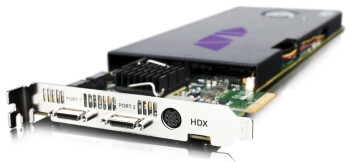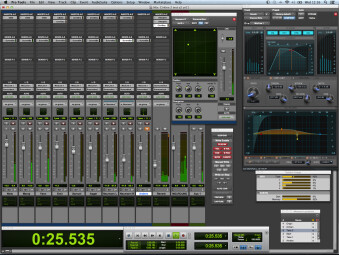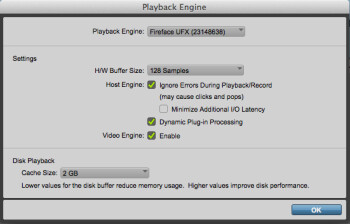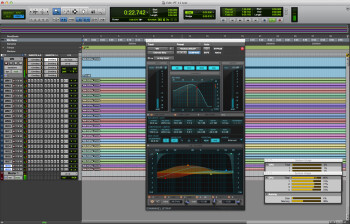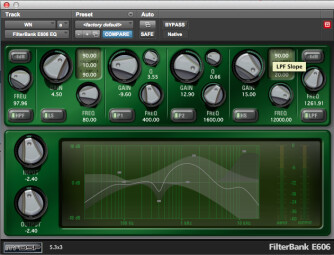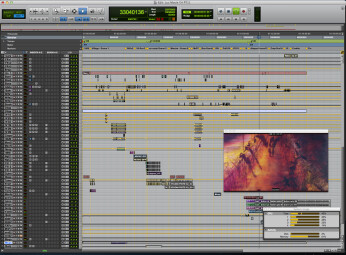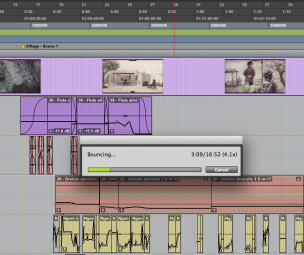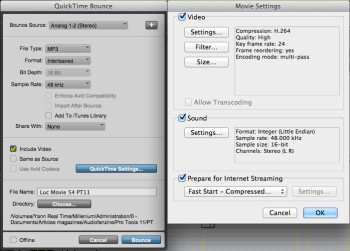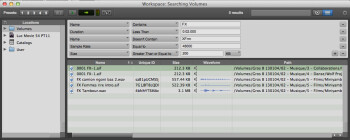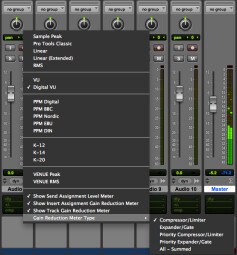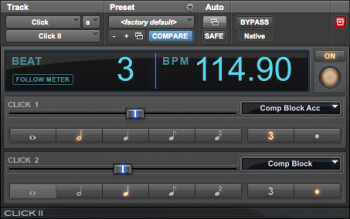The war between the biggest audio sequencers in the market is raging. Apple has introduced Logic Pro X, Ableton Live 9, MOTU Digital Performer 8, Cakewalk Sonar X2 and Steinberg Cubase 7 (and that's without mentioning FL Studio 11 and Reason 7), but AVID wants to defend its territory and launches a counterattack in the form of Pro Tools 11. PT 11 versus the rest of the world!
But what about if we don’t really care? Unless you are just starting out, people rarely change platforms because it can be painful. Rather than do a comparison that wouldn’t interest professional producers and musicians (if I have 300 Pro Tools sessions on my hard drive, there’s little chance I’ll change to Logic or vice versa), let’s try to take a closer look to see if this new version is worth it: as a longtime user of Pro Tools and Pro Tools HD, will I really be able to work better, faster and in a more creative way, while ending up with a better sound? And if so, at what price? Because in case you haven’t heard, the competition doesn’t sleep.
Under fire before being launched
Let’s bring out the controversies before actually starting our review: the upgrade from version 10 to version 11 is not only costly, but it also forces owners of HD cards (almost any professional studio, that is) to upgrade to HDX cards too. Not such a big deal if you want to change to 64 bits, considering that the old HD architecture didn’t allow it. We’ve been through this before when we went from TDM to HD. The problem is that it’s always the same people who have to pay, and we’re not talking peanuts here. That’s not the case for second and third generation Digi 002's, 003's and other MBoxes.
Second, the Complete Production Toolkit has been dropped. Users who payed around 2000 euros to get most functionalities of Pro Tools HD while staying native (surround, VCA tracks, etc.) have the option of upgrading to PT11, like everybody else, and thus lose their investment. Or they can pay 570 euros to get an HD Native. They are the only ones allowed to buy it without acquiring at least one AVID sound card. Since most of such users are people who already have an HD version in their studios and want to be able to take their work home, they will have to pay up… twice, even though they are AVID’s core customers. Remember that the upgrade price is the same as for PT10 HD owners.
Third, which concerns all users this time: the RTAS format will disappear and become AAX — AAX2, actually, to differentiate it from AAX32 bit, which works already since PT10. This has the added problem that AVID launched version 11 while not many plug-in and virtual instrument publishers were ready for it. Let’s forget about those who complain that they will not be able to use their pirated plug-ins and focus on two things. For starters, it’s really annoying to open a complete mix to test the new beast and realize that most of the original effects are missing. Not a day has gone by since I started writing these lines and the list of AAX plug-ins is getting bigger (the GRM Tools arrived this morning, for example). The frustration will go away eventually, we just have to be patient and everything will work out fine… Everything, really? What can we say about developers like URS, for instance, who announced they were already working with AAX two years ago and we still haven’t heard anything from them in this regard? Or from McDSP's S1 that has discreetly faded into oblivion?
So, does upgrading to Pro Tools 11 mean we will pay dearly only to lose some of our favorite effects and virtual instruments? It better be worth it. To sweeten the blow, AVID didn’t hesitate to include a full installation of Pro Tools 10.3.6 (compatible with 11, which is also backwards compatible) with every purchase of the newest version, in order to allow us to work with our old plug-ins… for some time.
64-bit architecture and performance
Once done with all grievances, let us rejoice in what’s good. The first novelty concerning the 64 bit architecture is the new audio engine: DAE (Digidesign Audio Engine) has now become AAE (AVID Audio Engine). How does that affect us? It essentially allows us to use more than 4 GB RAM in one session, which 32 bit systems do not allow. Then of course, HD systems will be able to soar thanks to the Disk Playback Cache Size option, which allows us to put all the audio of a session in the RAM before pressing the play key. Whatever it is, it means more plug-ins, more virtual instruments and bigger sessions for all! AVID claims that this fact (along with the transition to AAX format) has increased the performance of its software in a colossal, even exponential way — we obviously had to verify that. And we did it on a three-year old 2.53 GHz MacBook Pro with 8 GB RAM and a RME Fireface 400 sound card. By no means a racehorse.
We used the following method: first of all, we set a fixed buffer size (128 samples in this case) and compared Pro Tools 10 and 11 with a native plug-in with all functions activated. We chose Channel Strip (EQ / compressor / limiter / expander / gate), which also works in surround — a plug-in I can never say enough good things about. We did not take Dynamic processing into account, which we’ll discuss later. In terms of sound, we took one minute of white noise and ran as many plug-in instances as possible (10 per track) before doubling the whole up to the point where the CPU crashed before playing back a minute.
The result? Pro Tools 11 displayed an occasional error due to CPU overload while running 220 instances of the plug-in. With Pro Tools 10, the software began experiencing difficulties with 170 instances, which is already quite something. With buffer sizes of 32 and 1024 samples we get similar differences, which indicate a considerable improvement in terms of performance.
Yeah, right, but it’s only an in-house plug-in. Do all AAX effects work the same? The classic McDSP Filterbank E606 starts to tickle Pro Tools 11 when we reach around 500 instances, against 420 in Pro Tools 10, under the same conditions. OK, but what about virtual instruments? Rob Papen’s Blue (one of the first to migrate to the latest AAX generation) makes the CPU usage rise to 36% with 10 instances on a very rich pad and a chord with three sounds on Pro Tools 11, and with the same settings as before… against 53% in Pro Tools 10. What about the most voracious plug-ins? With Ozone 5 Advanced we couldn’t use all functions on PT10, even with a 1024-sample buffer. Using almost all functions (no Intersample Detection for the Maximizer nor Oversampling for the Harmonic Exciter) it reached almost 80% of CPU usage. With Pro Tools 11 and a buffer of 128 samples it reached around 55%. Engaging the remaining functions it increased to 80% on the same machine, always with a 128-sample buffer.
Such parameters are always hard to quantify: the CPU is always been required by other internal programs and there are so many things that need to be considered that it seems only wise to point out that all these figures give only rough estimates. While these are not accurate figures, it is true that even if the performance didn’t increase multiple times (as stated in AVID’s website), the new software does provide a 20% or 30% additional processing power margin. The improvement is real, which brings us to the following reflection: to the extent that we will recover our favorite plug-ins in a given time period doesn’t such an improvement in processing power represent a short-term financial gain? Let me explain myself: given the conditions I explained above, if I want to masterize everything with Pro Tools 10 and Ozone 5 Advanced in a professional way, I will have to get a new computer. If I were to upgrade to Pro Tools 11 that won’t be necessary, at least for the time being, so in that sense it’s hard to speak of deadweight loss!
Dynamic processing and offline bounce
The new AVID audio engine, apart from the fact that it seems to be actually more effective, also offers some remarkable advantages in comparison to the old one. Firstly, it is common to Pro Tools and Media Composer, which means that, even if we didn’t test it, it ought to facilitate the transfer between both software programs dedicated respectively to audio and video. Next, it allows us to record with almost no latency at all thanks to an independent buffer at the input, regardless of the latency chosen, if we have an AVID sound card or an external card with its own mixing system, like RME’s or MOTU's, for example. The latency compensation was also simplified, but overall the change is no more stunning than it is open to criticism. All in all, it’s OK. Let’s move on.
In the same vein, and in my opinion much more useful, the Dynamic Plug-in Processing option allows us to allocate the RAM only to the effects used in real time: in other words, if there is no audio, the plug-in is considered inactive. For example, I opened the final mix session of Miniyamba, an animation film by Luc Perez where I was in charge of mixing the music, dialogs and sound effects created exclusively with African instruments. The session has 102 audio tracks, including 62 stereo, 13 stereo aux tracks, and 88 plug-ins, including 14 reverbs. In HD it’s fine, but it’s a real nightmare to try to mix that in a native Pro Tools 10! Every change or new sound added demanded that we create a new sub-mix for the different tracks, deactivate one or the other track group, and apply corrections permanently… With PT11 and dynamic allocation (I had to replace a bunch of plug-ins for equivalent ones, while I await the AAX versions) it never exceeded 60% of CPU usage, HD video included: the reverbs, for example, represent different spaces in different moments of the film, so they seldom need to be active at the same time. So, in this particular case, I suddenly had the impression of having changed computers.
Let’s talk now about offline bounce. True, it has been available in ALL other DAWs on the market for a long time, so it’s nothing to write home about… except for Pro Tools users, where it didn’t exist and now it does, and it works! It’s weird, I would love to see the face of old Pro Tools users when they use it for the first time, you can probably see tears in their eyes. Quite original as well is the fact that we can export directly from the sends or the track outputs with a right click! To cut it short, the 16 min 52s Miniyamba bounce in a native system took 6 min 45s, which means it is 2.5 faster. For a project of that size, it’s very good. Especially when we know we are talking about three different bounces (one full mix and two sub-mixes), plus three equivalent MP3 files — excellent initiative — as well as the option to send the bounces to SoundCloud and iTunes. In some other cases, it can be up to 150 times faster (the fastest we could see was 50 times faster) ─ do I hear trumpets sounding.
OK, now let’s be more critical: to start with, the offline bounce works ONLY if we do not use any hardware processors. So most professional studio projects can kiss it goodbye… however this is not Pro Tools specific, it applies to all other software programs. Next, professionals need to check their bounces before sending them to anyone, which means listening to them from start to end… without taking into account the eternal summing vs bouncing debate, which we will not address here. So, in short, it will be very useful for transitional versions and to avoid errors during bouncing, which made many users unhappy in the past. Finally, we must also mention that the option we used here to do multiple bounces from different sources is reserved to the HD version (up to 16 sources in 7.1). Such is life.
Oh, and by the way: we can also export directly to a QuickTime video, which will save us some time and money in case you don’t have QuickTime Pro yet (ever heard of cmd+alt+V in QuickTime Pro?). Do note that multiple bounce is also possible, and that we can even modify the video compression parameters — just like in the 27 euros program, apparently included in Pro Tools 11, that every professional working with video must have, if only to modify the result once the bounce has been made. Thanks all the same.
A new video engine
Pro Tools is frequently associated to post-production due to its ubiquity in all specialized studios and its versatility as soon as we use the Timeline. The new Avid Video Engine, which must be activated in the Playback Engine tab, will only reinforce this idea since its engine is common to Pro Tools 11 and Media Composer. Consequently, we can work with an external monitor on DnxHD and QuickTime with the whole AVID range and with all sorts of formats without any transcoding. Only Pro Tools HD users will be able to work with more than one video track at a time (64, in this case), with edit possibilities, which was already the case before. We also noticed that some new possibilities appeared in the I/O section of the Arrange window. Thus, we can also modify the video playback format, reducing the quality to improve the audio performance or select and configure an external video device. Among the options we can also find new elements, like the possibility to choose whether the CPU or the graphic card will handle the video. By the way, Satellite Link (to synchronize up to 12 Pro Tools HD systems) is now included in Pro Tools 11 HD, while Pro Tools 11 comes with Video Satellite LE (to manage the video in sync with another Pro Tools). The option to capture video, which I never used, seems to have been removed.
Overall design and metering
Oh, false miracle, we have 64 undos instead of the usual 32… We won’t complain much, because the option is there, but do bear in mind that most of the functions of the DAW still cannot be undone this way (like deleting three tracks or modifying all outputs at once). Pro Tools has always been somewhat strange in this regard, but it also has good things, like the possibility of undoing an action even after saving. Don’t forget to keep the automatic backup option on, considering that 64 undos are not enough, given the conditions…
In terms of design, DigiBase was replaced by Workspace, a browser that replaces the three former ones (Catalog, Project and Workspace) in one single window ─ very practical. A more advanced searching system and a better file indexation were implemented to optimize searching. We can create additional windows if needed and everything is just a right-click away. In short, it’s much more intuitive and effective to what was in place up to now.
The same applies to the CPU usage indicators, which are more complete and accurate, to the new and well-thought shortcuts (a bypass for all EQs, for instance) and to the automation, apparently sample-accurate. All of this is very welcome and we won’t complain that we have it.
Much more interesting and visible, the level indicators take the place of honor! In fact, with a simple right click (but only in Pro Tools HD) we can access an impressive list of VU-meters and pseudo-peak-meters, including Bob Katz’s K-12, K-14 and K-20 scales, the Venue RMS and so on, that you can configure all at will… but it lacks the LUFS and True Peak as defined by the EBU R128 Recommendation, which are the standard for broadcast across Europe! Oh, well, yes it’s only AVID’s core target, no kidding. One can only imagine that such pitfall will be addressed in a future update. To complete the offer, and once again only in Pro Tools HD, a gain reduction indicator appears right next to the level indicator every time we place a compressor/limiter/expander/gate (at will) on the track.
Finally, in the mixer (and in all PT versions) there’s a headroom indicator in the lower right corner. However, the clip indicator turns red only when the input or output converters exceed 0dB, and for a good reason: with 64 bit float we have a very acceptable internal dynamic range of more than 1,000 dB…
To finish this section, we can mention the integration of the Artist Series interfaces thanks to the Eucon 3 protocol. This allows for some improvements while AVID continues to explore the world of controllers with the high-end S3L system for live mixing, which already includes AAX plug-ins as well as an HDX card and all meters already mentioned.
Any new instruments or effects?
Well, no. None. AVID even dares to announce Click 2 — a metronome. Jokes aside, it is as perfect as the old one was useless, because it offers a visual section and variable values, amplitudes and sounds for all clicks. Thank you very much, AVID, even if there’s absolutely nothing else… Oh, yes, there are actually less things. Like the time stretch TC/E plug-in that was completely eliminated, to the detriment of some that were fond of using it, but which nevertheless won’t affect much the vast majority of users. Most of which use Time Shift, while awaiting the return of X-Form once ported to AAX 64 bit (it already exists in Elastic Audio format).
Moreover, there’s also no TL Space nor Phasescope for the time being… What else? The A.I.R. plug-ins and instruments, formerly by Wizoo, are either already present and free (AIR Creative Collection) or are in the process of being ported (AIR Instrument Pack), just like the Native Instruments, Waves, Universal Audio, etc. So, in short, we can already see that almost the totality of the market will migrate to the new Pro Tools format in the short term, to the dismay of small developers who are going to basically work for free for AVID. A priori users don’t seem to be affected much, plus they will enjoy improved future performance. But all the same, there is nothing new to exploit our creative side!
Pro Tools as a first sequenceur?
|
Before concluding, a brief advice for those of you who are just starting out and do not know how to choose among the sequencers available on the market. Why choose Pro Tools and not another one? Simply put: all DAWs on the market do more or less the same things, your choice will depend on what you intend to do with them. If you want to work with images and do post-production, Pro Tools is the essential reference. I’m not saying that it’s the best nor the only system that can do the job, but rather that it is the program most often used by professionals. Thus, if you want to get into this world, you’d better learn how to use it. The same applies to most major studios and production facilities, especially due to the hardware and the nonstandard possibilities that HD(X) systems provide.
For musicians that work in their home studios and record/mix their bands themselves, there are little differences: every time a major sequencer announces a feature that sets it apart from the rest, three months later every single sequencer has already implemented it. So, in the end they all do the same, except in exceptional cases. Even Ableton Live, which is trying to compete with the market leaders dedicated to studio productions after being conceived for live music, has started implementing little by little the same features as all the rest while its typical features are copied by the others. An example: Live took Sonic Foundry Acid’s Elastic Audio concept and improved it by introducing their flexible Warp markers. Pro Tools then took this concept and enhanced it by introducing quantifiable markers on a grid… just so Ableton could modify its own system to adapt it to that of PT. In the end, it’s the same everywhere.
Conclusion
Let me pose again my initial question: as a longtime user of Pro Tools and Pro Tools HD, will I really be able to work better, faster and in a more creative way, while ending up with a better sound?
My answer is: yes, I was able to work faster and better. I’ll even wait to change my computer. No, I don’t think I ended up with a better sound, and I won’t be more creative thanks to Pro Tools 11, since it’s obvious that that wasn’t the purpose of this update. Visually similar to its predecessor, it offers improvements only in terms of performance — major improvements in a version that seems pretty stable already (the only crash I experienced during the whole test was a nasty shut down at the end of the long session). As a consequence, and in spite of its price, Pro Tools 11 might become crucial in the long run for those of us who can already see the limits of our current systems but still don’t want to change computers. It is certainly expensive, very expensive actually (especially for those who have to migrate from HD to HDX) — AVID certainly knows to honor its name, even if right now they seem to be actually listening to their users, at least on a technical level: they demanded a better performance and a 64-bit engine. They got what they wanted but cannot back down from now on. Too bad for the rest, but in the end, AVID just couldn’t stay behind as the only one still working at 32 bits, could it?
But let’s leave it there. Whatever we may say, this version alone represents a substantial improvement in terms of performance and its new audio engine, which after all is the cornerstone of the system. It surprised us in a very positive way. Otherwise, the new audio engine will not be too distracting: in the end, Pro Tools 11 is like installing Pro Tool 10 on a faster and more powerful computer in every respect.
So, to wrap it up, Pro Tools 11 marks the controversial transition of AVID’s sequencer to 64-bits, while keeping the functionality and maturity of Pro Tools 10. Very expensive for many people and without any new plug-ins or virtual instruments, it offers substantial improvements in terms of performance and design at all levels. That won’t be enough for some, but nevertheless, all the evolutions observed (and until all plug-in developers migrate to AAX) make this an almost faultless version.
Compatibility: Mac OSX 10.8+ (Mountain Lion)/Windows 7+ (64 bit)


